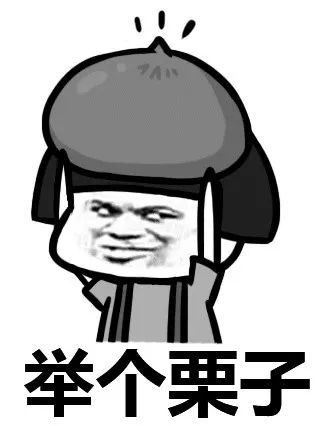接口测试很难吗?教你用Postman实用代码实现时间戳加密
在使用postman进行接口测试的时候,对于有些接口字段需要时间戳加密,这个时候我们就遇到2个问题,其一是接口中的时间戳如何得到?其二就是对于现在常用的md5加密操作如何在postman中使用代码实现呢?
01
接口举例
下面我们以一个具体的接口例子来进行说明。
首先来看看我们的接口文档信息,如图所示:
接口文档
此接口文档中,需要三个参数customercode、timestamp和itoken(是customerCode+timestamp+ytoken加密后的结果)。
第一次操作的时候,我们使用postman会这样操作,如图
postman
这样操作流程是:
-
选择提交方式是post,输入接口的url地址
-
选择接口情况的方式是x-www-form-urlencoded
-
设置接口的参数customerCode、timestamp和itoken和值
-
设置完成之后点击send发送,查看接口响应结果
02
说明
x-www-form-urlencoded即是application/x-www-from-urlencoded,将表单内的数字转换为键对值。
postman中 form-data、x-www-form-urlencoded、raw、binary的区别:
http://blog.csdn.net/ye1992/article/details/49998511
时间戳转换工具:
http://blog.csdn.net/ye1992/article/details/49998511
md5加密工具:
https://md5jiami.51240.com/
这样创建会话的接口我们就完成了!但是为了系统的安全性,这里的timestamp是每30分钟就会过期的,下次我们又需要重新设置timestamp,就是md5加密的结果......这样操作岂不是太麻烦?
还好postman中Pre-Request Script可以在 Request 之前自定义请求数据,这样做的好处就是可以以嵌入脚本的方式动态准备测试数据,并根据业务需求设计测试用例。
这里我们仍继续以上面的用例为例:
在postman中,如何才能获取当前机器上的timestamp呢?
Math.round(new Date().getTime())可以满足我们的要求!!!
那代码如何实现呢?
//设置当前时间戳毫秒
postman.setGlobalVariable("timestamp",Math.round(new Date().getTime()));这样就将获取的时间戳设置为全局变量timestamp
我们知道itoken的值是md5(customerCode+timestamp+ytoken')
那么接下来就可以动态的获取md5的信息了,代码如下:
//发起请求之前获取当前的时间戳放在参数里
//postman.setGlobalVariable("customerCode","***2345677***");
//1.设置环境变量 postman.setEnvironmentVariable("key", "value");
//2.设置全局变量 postman.setGlobalVariable("key", "value");
//environment.customerCode = "***2345677***";
customerCode = postman.getGlobalVariable("customerCode");
//设置当前时间戳毫秒
postman.setGlobalVariable("timestamp",Math.round(new Date().getTime()));
//environment.timestamp = Math.round(new Date().getTime());
//postman.setEnvironmentVariable("unixtime_now","timecode");
//var jsonData = JSON.parse(request.data.applyJsonStr);
//postman.setGlobalVariable("ytoken","*********b176a4739bfccb*********");
//获取全局变量
//如postman.getGlobalVariable("key");
customerCode = postman.getGlobalVariable("customerCode");
timestamp = postman.getGlobalVariable('timestamp');
ytoken = postman.getGlobalVariable("ytoken");
var str = customerCode+timestamp+ytoken;
//postman.setEnvironmentVariable("str",str);
//environment.str = str;
postman.setGlobalVariable("str",str);
//var md5 = CryptoJS.MD5(str).toString().toLowerCase();
//使用md5加密
//var strmd5 = CryptoJS.MD5(str).toString();
var strmd5 = CryptoJS.MD5(str);
//environment.strmd5 = strmd5;
postman.setGlobalVariable('md5',strmd5);
//environment.md5 = md5;
//timecode=System.currentTimeMillis();
console.log(str);
而在接口请求中,就可以使用已经定义好的变量来进行接口操作,代码如下:
customerCode:{{customerCode}}
timestamp:{{timestamp}}
ltoken:{{md5}}这样下次创建接口的时候,直接运行该用例即可,不用再次修改参数值(≧▽≦)/
那么我们如何才能知道该接口用例是成功的呢,该怎么断言呢?
这里列出我该接口断言的一个示例,代码如下
/*
// 推荐用全等 ===,确保类型和值都一致
tests['Status code is 200'] = responseCode.code === 200;
// 判断是否存在 'success' 值
tests["Body matches code"] = responseBody.has("0");
var jsonData = JSON.parse(responseBody);
postman.setEnvironmentVariable("sessionId",jsonData.result);
tests[`[INFO] Request params: ${JSON.stringify(request.data)}`] = true;
tests["have result "]=jsonData.hasOwnProperty("error")!==true;
tests[`[INFO] Response timeout: ${responseTime}`] = responseTime < 6000;
**/
//状态代码是200
if(responseCode.code === 200){
// 判断是否存在 'success' 值,检查响应体包含一个字符串
tests["Body matches code"] = responseBody.has("0");
//响应结果中result保存为全局变量sessonId
var jsonData = JSON.parse(responseBody);
postman.setGlobalVariable("sessionId",jsonData.result);
//输入接口参数信息
tests[`[INFO] Request params: ${JSON.stringify(request.data)}`] = true;
// tests["have result "]=jsonData.hasOwnProperty("error")!==true;
//判断接口响应结果有result
tests["have result "]=jsonData.hasOwnProperty("result")===true;
//判断接口响应时间小于N秒
tests[`[INFO] Response timeout: ${responseTime}`] = responseTime < 6000;
}else{
//接口请求失败
tests["Waring:Request Failed. Please Fix!"] = false;
}这样创建会话的接口就完成了!
感谢每一个认真阅读我文章的人,看着粉丝一路的上涨和关注,礼尚往来总是要有的,虽然不是什么很值钱的东西,如果你用得到的话可以直接拿走:
① 2000多本Python电子书(主流和经典的书籍应该都有了)
② Python标准库资料(最全中文版)
③ 项目源码(四五十个有趣且经典的练手项目及源码)
④ Python基础入门、爬虫、web开发、大数据分析方面的视频(适合小白学习)
⑤ Python学习路线图(告别不入流的学习)
在我的QQ技术交流群里(技术交流和资源共享,广告进来腿给你打断)
可以自助拿走,群号913569736(备注“csdn000”)群里的免费资料都是笔者十多年测试生涯的精华。还有同行大神一起交流技术哦。



